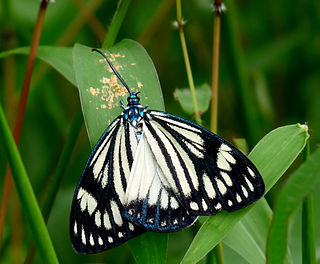
The Zygaenidae moths are a family of Lepidoptera. The majority of zygaenids are tropical, but they are nevertheless quite well represented in temperate regions. Some of the 1000 or so species are commonly known as burnet or forester moths, often qualified by the number of spots, although other families also have 'foresters'. They are also sometimes called smoky moths.
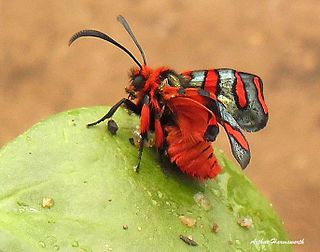
The fire grid burnet is a day-flying moth of the family Zygaenidae found in Zimbabwe and Malawi to Mozambique and South Africa.
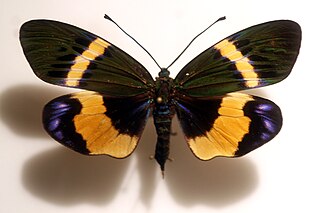
Chalcosiinae is a subfamily of the Zygaenidae, containing many species, mostly little known. Prominent sexual dimorphism, bright aposematic coloration and mimicry complexes are widespread.
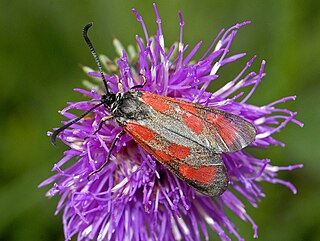
Zygaena loti, the slender Scotch burnet, is a moth of the family Zygaenidae. It is a diurnal moth characterized by a black body, light colored legs, and red spots on its wings. The caterpillars are a yellow-green color and usually molt out of dormancy in late February to early March. The larvae feed on plants from the family Fabaceae until they enter their pupal stage and mature into adults in May to early June. For mating, Zygaenidae exhibit a dual-partner finding strategy, where females use pheromones while assuming a calling position, and males exhibit a patrolling behavior where they utilize both vision and the olfactory receptors in their antennae to locate a potential mate. Although regionally endangered as their population is declining, Z. loti is found all across Europe, inhabiting areas rich in their desired food plants: lime-rich, and characterized by a hot and dry climate. The decreases in their population are likely due to factors such as habitat loss and fragmentation brought on by commercial agriculture and urbanization, as well as global climate change. There are few conservation programs currently focusing on Zygaena loti.

Zygaena trifolii, the five-spot burnet, is a day-flying moth in the family Zygaenidae found in North Africa and Europe. It was described by the German zoologist Eugenius Johann Christoph Esper in 1783 from the type specimen found in Frankfurt am Main, Germany.
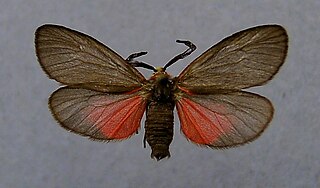
Aglaope infausta, or almond-tree leaf skeletonizer moth, is a moth of the family Zygaenidae.

Rhagades is a genus of moths of the family Zygaenidae. The genus was erected by Hans Daniel Johan Wallengren in 1863.
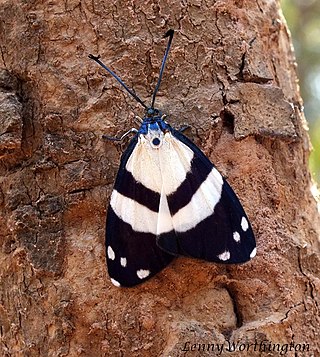
Corma is a genus of moths of the Zygaenidae family.

Konstantin Aleksandrovich Efetov is a Ukrainian biologist and biochemist, Honored Scientist of Ukraine, Academician of the Russian Academy of Natural History, Professor, Dr. Biol. Sci., Head of the Department of Biological Chemistry and Laboratory of Biotechnology of the Crimea State Medical University.
Rhagades amasina is a moth of the family Zygaenidae. It is known from Bulgaria (Sakar), Greece, Turkey, northern Syria and Lebanon.
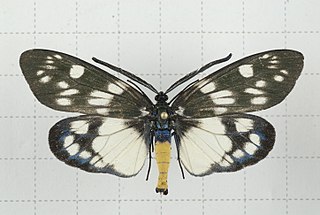
Eterusia aedea, the red slug caterpillar, is a species of moth in the family Zygaenidae. It was described by Carl Linnaeus in his 1763 Centuria Insectorum. It is found in Sri Lanka, India, Nepal, Taiwan, Japan and China.

Cyclosia panthona is a moth in the family Zygaenidae. It was described by Caspar Stoll in 1780. It is found in China, Hong Kong, India, Sri Lanka, and Myanmar.
Chloroclystis fragilis is a moth in the family Geometridae. It is found in New Guinea.

Zygaena sogdiana is a species of moth in the Zygaenidae family. It is found in Central Asia.

Zygaena cuvieri is a species of moth in the Zygaenidae family found from Armenia and Syria to Central Asia. In Seitz it is described as follows: "This large fine Burnet has rosy-red wings, the forewing being divided into 3 areas by two black-grey bands; a broad collar and a rosy abdominal belt. Inhabits Anterior Asia, from Syria through Mesopotamia to Turkestan."

Zygaena manlia is a species of moth in the Zygaenidae family. It is found in Armenia, Turkey and Iran.In Seitz it is described as - "Similar to Zygaena cuvieri and with an equally broad rosy red collar and abdominal belt, but the blackish bands separating the red areas of the forewing are much broader, the distal area being represented by an irregular half-divided patch. North Persia"
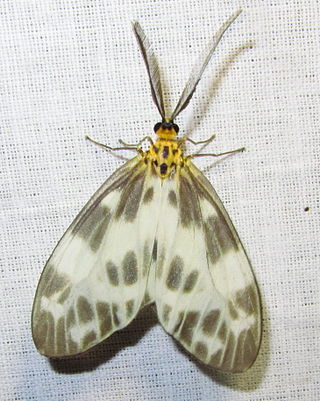
Corma maculata is a species of lepidopteran insect a moth in the family Zygaenidae. It is known from Assam, Bhutan, and Myanmar.
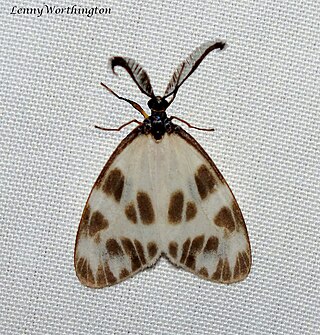
Corma zenotia is a species of moth in the family Zygaenidae.















